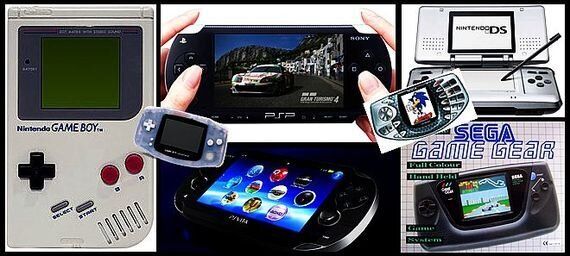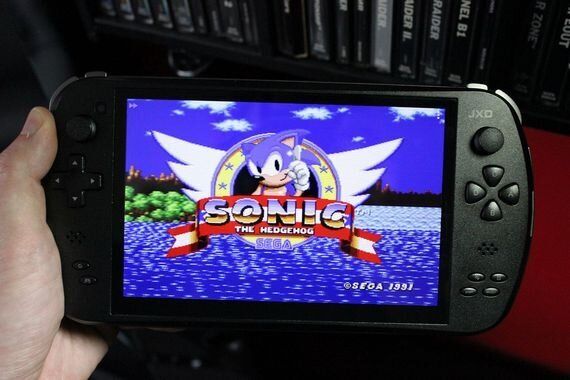As technology has improved and adjusted to meet the modern lifestyle, so has our perception and use of video games, moving on from the solitary home gaming experience of the 1980's, to the epic online 'always connected' multi-player offerings we see today. Likewise, the manner in which we play the games has altered - none more so than the handheld experience.
Gaming while on the go got gamers out of the bedroom and on the move without leaving their games behind. Well, that was the idea and it worked, from the plinky-plonk animations of Nintendo's Game & Watch systems featuring limited animation, to the genre-busting Gameboy, granting Nintendo almost complete dominance of the handheld market which went on to last for the best part of a decade. Amazingly, in that time there were no significant contenders and this resulted in a stagnation of technology, creating a loss of interest in handheld gaming amongst a wider consumer demographic.

Consumers demanded more in terms of experience, and mobile phone gaming hadn't really caught on, barely matching up to that of the Gameboy released 10 years earlier. Snake anyone? However, it felt like almost an inevitability that a phone company would eventually catch on, at some point, with Nokia being the first to show their hand at taking a stab at this potentially lucrative market with the N-Gage, but awkward design, a tiny screen and that side-talking use would always hold the phone back. General perception among the wider market was that it was poor and in many respects it was, while also being under-appreciated at the positive steps that N-Gage made towards the mobile gaming market we see today.
The dedicated handheld gaming market has seen a bumpy patch as of late; call it an identity crisis for the genre. Nintendo's DS and 3DS have done well in terms of sales numbers, but numbers alone don't always give an idea on percentage growth of the market. With just Nintendo and Sony selling dedicated handheld gaming systems, it seems amazing that after 30 years there are still only two main contenders for your cash.

The growth of the mobile phone market has changed the roadmap forever in this regard, providing a mass market exposure to cheaper, independently developed software, breaking the stranglehold of the two main manufacturers and putting those aforementioned numbers into greater perspective of the entire mobile market. This has been joined in more recent times by Android powered devices, and if the Sony Xperia Play demonstrated both the potential of the technology combined with tactile controls, Sony's lack of support for the device certainly didn't show it. However this has given rise to a new set of market contenders, besides the high-end Nvidia Shield. The JXD s7800b has been making a name for itself amongst core gamers of late, and at a price that simply cannot be ignored.
So what is the unimaginatively titled JXD s7800b? Quite frankly, the best thing to happen to handheld gaming in years. An Android 4.2.2 tablet with a highly capable architecture, which runs not only the usual selection of popular apps and games, but also a wealth of software emulation with stunning results. For those unfamiliar with emulators, they are programs which simulate older systems such as the Sega Megadrive. Emulators can be purchased legally from the Google Play store. As for the games, these are known as 'roms' and the legality around them has always been a grey area but with one golden rule: you should not download and run a game unless you've already bought it, well luckily for me I've already bought them all, and I've been testing the unit extensively and you can see more in the video below:
Many phones can power android games and emulations, but where the JXD stands ahead of the crowd is in the size and quality of its screen combined with physical controls, and the latter can't be underestimated in its importance. The JXD can run a range of games right up to the Sega Dreamcast with amazing performance from a device for the price. It really brings into perspective how overpriced a system like the Nintendo DS still is, a device years out of date yet selling on the name alone. The JXD continues to 'Wow' me and those that see it in action continue to be impressed. Without the marketing budgets or widespread exposure, there's currently no danger of the JXD leading the market or taking a share from the main contenders, but be in no doubt that for a growing group of gamers this is the leading handheld out there. The JXD combines solid hardware with good controls and useful software. It will take time to get the most from it, but this gamer swears by it. I put my money where my mouth is, and if you're keen on gaming on the go you can't go wrong.
Top Image Credit; Official Rights Free Images provided by Nintendo, Sony, Sega and Nokia, arranged by Alan Boiston.
Bottom Image Credit; Alan Boiston